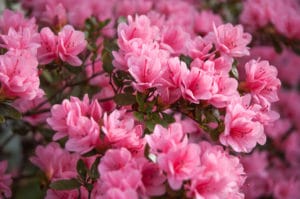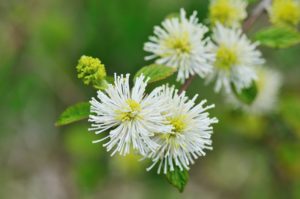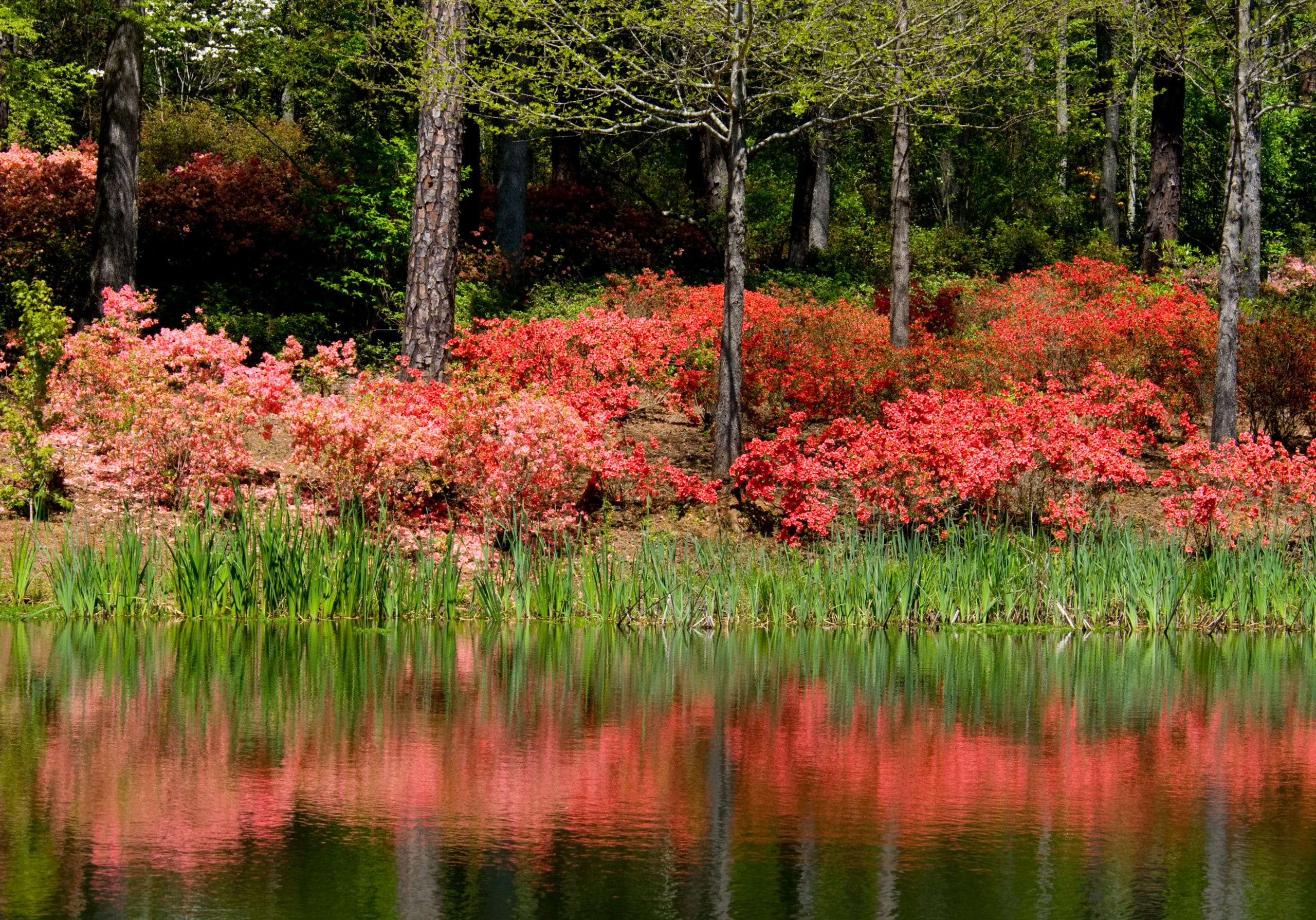Pine trees are a popular choice for gardeners out there who wants to have some touch of trees on their lawn. They work well with landscapes and can create a privacy barrier and windbreak. On top of that, pine trees are also expected to have cheerful year-round greenery.
You have your own set of pine trees growing sturdily in your lawn and you want to spice things up. Well, pine trees alone might be dull to look at, and putting shrubs underneath will change the game. But you have no idea where to start.
There are lots of options out there and picking the right shrubs is important. Luckily, this article will give you information about shrubs with low maintenance that grow well under pine trees. To start with, you have to be familiar with pine trees.
What You Need To Know About Pine Trees
For starters, pine trees’ size is not a joke and their canopy creates an extreme shade that can be unfriendly to most plants. Aside from that, they also have an extensive root system that ingests most of the available waters in the soil.
Lastly, their falling pine needles, once decayed and gets mixed up in the soil cause the soil to become acidic.
With all that caution, you surely have an idea of what shrubs to look for. They must be tolerant of full shade, dry soils, and acidic soils. These criteria alone pretty much count a lot of shrubs off the list.
Fear not, for there are still many available shrubs to choose from. The next thing you have to do is figure out the kind of pine trees you have. Each pine trees are unique and getting familiar with them increases your chances of picking the right shrubs complements with it.
Some examples of pine trees include:
1. Pinus densiflora ‘Low Glow’
2. Pinus mugo cultivars
3. Pinus parviflora cultivars
4. Pinus banksiana ‘Uncle Fogy’
5. Pinus jeffreyi ‘Joppy’
6. Pinus strobus cultivars
7. Pinus sylvestris cultivars
8. Pinus Negra ‘Oregon Green’
9. Pinus koraiensis
10. Pinus wallichiana ‘Zebrina’
11. Colorado blue spruce
These are the 11 examples of pine trees you might want to have or the ones you already have. The other pine trees, like the Pinus lambertiana, which typically grows in southern California mountains, grow too large for a garden but few people have it in their yard. Nevertheless, whatever pine trees you have, they all provide the same criteria on what type of shrubs to grow under it.
Shrubs That Grow Well Under Pine Trees
1. Azaleas
First on the list is Azalea, the famous plant in the South. The flowers of Azaleas have the loveliest shades of pink that can make everyone turn an eye on them. They are easy to care for and get even more beautiful in spring.

Azaleas are one of your best picks to grow under a pine tree. They are not suitable in heavy sunlight because it can burn their leaves thereby making them a good candidate under a pine tree. They can tolerate intense shade but not full shade as it can deprive them of oxygen which can affect their blooming and growth.
Aside from that, Azaleas are quite known when it comes to their flower coverage, and planting them beneath a pine tree balances their appearance. They can also tolerate acidic soils as it is one of their requirements and works well with other acid-loving plants also.
Moreover, Azaleas are shallow-rooted plants which means they need to be planted in well-drained soil to prevent root decay. Since pine trees use much of the available water because of their roots, putting Azaleas near them would not cause much of a problem.
2. Witch Alders
The Witch Alders, which is native to the southeastern part of the U.S., is a slow-growing, deciduous shrub known for its pleasing fragrance, white flowers, and leathery blue-green foliage. The interesting part of Witch Alders is it can turn itself into a combination of yellow, orange, and red-purple during fall. They are also pretty talented in fighting diseases.

Unlike Azaleas, this plant can tolerate full sun to partial shade which makes it included in this segment. However, Witch Alders are preferably planted under sunshine to get the best floral and foliage display of the plant. But it does not mean it cannot be planted under a pine tree.
Moreover, Witch Alders loves rich and acidic soils which is a crucial criterion for growing under a pine tree. They also prefer well-drained soils but are not dried. Hence, you still might supply them enough moisture even though the pine trees keep the soil well-drained.
3. Jacob’s Ladder
There are two species of Jacob’s ladder, which are Polemonium reptans and Polemonium caereleum. The former is already a threatened species in some states and gardeners are discouraged from taking the plants in the wild. The latter is specially developed to be grown in the garden and is rarely found in the wild.
Similar to Bluebells, this plant is a perennial type but still included in this segment because of its wonderful features. First, Jacob’s ladder has one of the amazing foliage and the plant forms a cluster of densely packed leaf stems with its tiny leaflets. Second, the color of its stems comes in white, pink, blue, or yellow depending on the cultivar. Third, they are low maintenance plants.
Also, Jacob’s ladder prefers shady to semi-shady environments as they tend to suffer in extreme heat conditions. They also love a moist but not soggy environment which makes them qualified to grow under a pine tree. Besides, Jacob’s ladder can get pretty invasive once they have established and which makes them capable of putting a great show under a pine tree.
4. Hydrangeas
Hydrangeas should be your first choice if you want to have a stunning show in your garden. This lovely shrub has large globes of light blue flowers that cover its shrub in summer and spring. Indeed, Hydrangeas will give your yard a different touch once planted under pine trees.
Furthermore, Hydrangeas love warm morning sun but they hate extreme heat conditions in the afternoon. Hence, planting them under a pine tree will solve that issue. They also dislike intense winds and pine trees can act as a wind barrier to protect them.
However, some will say that it is not best to plant Hydrangeas underneath a tree as it creates a competition for water and nutrients which makes it uneasy for the shrub to grow abundantly. But they also need a good drainage system which means that they can still be planted under a pine tree, but you have to water them regularly and provide nutrients to balance everything. It might take some effort but Hydrangeas will never fail your efforts because they are surely magnificent!
5. Bluebells
Bluebells are known to be one of the most popular flowers found in meadows, gardens, and woodlands. There are six main types of bluebells such as English Bluebell, Spanish Bluebell, Virginia Bluebell, Scottish Bluebell, Campanula, and Hybrid Bluebell.
Bluebells provide a fusion of deep purple and pinks to whites and blues. The different varieties of bluebells have unique features like the English bluebells have strong fragrant flowers while Spanish bluebells do not have strong fragrant flowers. Nevertheless, this plant is beautiful as we often see them in a bouquet.
Although Bluebells are not technically a shrub but a perennial, they are still a good choice to grow under a pine tree because of their features that pass the criteria. They can tolerate and thrive in shade, prefers acidic and well-drained soil. Most importantly, they quickly multiply under the shade of large trees like pine trees which can pretty much compensate for its minor issue.
6. Periwinkle
Periwinkle, also known as the creeping vinca or creeping myrtle, is commonly found creeping down steep hillsides and banks. They have cute little flowers that exhibit the combination of fabulous purple on the corner and white in the middle.
This plant is also used as a spreading shrub or ground cover. Periwinkle is also drought-resistant and needs little maintenance once they have been established. On top of that, Periwinkle grows best in a partially shaded area and prefers acidic soil. Although it can still thrive in different sunlight and soil conditions.
Moreover, Periwinkle does not work well near a flower bed or a garden, as they tend to dominate other valuable plants you have in the garden. Hence, the best place is under a pine tree, which is perhaps, the perfect spot for Periwinkle given that its features work well with pine trees.
7. Coral Bells
Coral Bells, also known as alumroot, also belongs to the perennial type of plant. They have several foliage colors starting from bronze, purple and more. The term coral bells are inspired by their spikes of tall bell-shaped blooms that will impress everyone because of their foliage color.
As with other perennials included in this segment, coral bells has also it is an advantage that makes them included in the list. First, they are low-growing and naturally found in wooded areas which makes them a good addition to woodland gardens.
Second, they are also low maintenance once established but occasional watering is required.
Nevertheless, Coral bells pass the criteria of growing under a pine tree, despite it being a perennial. They prefer to grow in shade and moist but well-drained soil.
8. Astilbe
Astilbe is one of those plants that are quickly recognized because of its attractive appearance emanating the shade of pink but they are also found in white to dark purple. They are tall and fluffy which makes them a great addition to your garden.
Moreover, Astilbe plants prefer to grow in shade and a correct soil to maximize growth. They wanted a good drainage system while the moisture is maintained. This characteristic makes the Astilbe a candidate that grows well under a pine tree.
In terms of maintenance, this plant requires minimal effort except regular watering throughout its active growth. You have to remember that pine trees only keep a proper drainage system and not moisture. Thus, provide them enough water because drying out can lead to leaf scorch and eventually to the death of the Astilbe plant.
9. Bleeding Hearts
Bleeding hearts comes with attractive bluish-green foliage with a pink flower. It got its name from the small part of the flower-like a drop of blood although it comes in white.
Moreover, Bleeding Hearts prefer to be planted in shady or part shade area since this plant is a perennial type, which dies if exposed to extreme heat. Also, they love consistent moist in the soil. In other words, it is safe to grow them under a pine tree but a regular watering cycle is required.
When the plant begins to yellow and wither, cut the foliage and leave them on the ground. You mustn’t remove the foliage before it turns yellow. Nevertheless, this attractive plant is very simple to maintain and people are often surprised that a beautiful plant like Bleeding Hearts requires minimal effort only.
10. Rhododendrons
Rhododendrons are one of those attractive and blooming specimens of the plant yet require only low maintenance if planted properly. It also has funnel-shaped flowers and is often fragrant like Azaleas. Although one can tell the difference between Azaleas and Rhododendrons by the shape of the flowers alone.
In addition, to plant Rhododendrons properly, you have to find an area away from direct sunlight and where they can be protected from the wind. They also love well-drained soil as waterlogged roots are the main cause of landscape failure. Hence, you know by now where that place is, and that is under a pine tree.
Since Azaleas and Rhododendrons belong to the same family, it is also likely that Rhododendrons grow well under a pine tree. But you can also plant them together for that extra gardening experience and they are both just fine.
Jenny Marie
Tribal Writer
Edited By
Patricia Godwin

